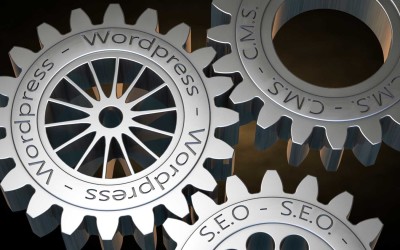While on its face, a pop-up might seem like a great way to get a website visitor to take action, it can also come with many negative aspects that you need to consider before deciding to do so.
Are you considering adding a pop-up to announce a short term sale or special, or do you want to have it there long-term to encourage newsletter signups to grow your mailing list?
The intent of the pop-up matters when trying to determine if this is a good idea or not. In my opinion, the former is fine, for a short while, but the latter is a big mistake.
Pop-up conversion rates notoriously suck.
One needs to consider the actual conversion rate they are likely to get with a pop-up and weigh them against issues having one can cause, not only with your SEO but also with your overall user experience.
In one study of over 1.7 million pop-ups, pop-ups’ conversion rate was notoriously low, which does not surprise me much.
- The top 10% of the highest performing pop-ups only averaged about a 9.28% conversion rate. And, by conversion rate, we mean that someone saw the pop-up and tool action.
- The average conversion rate for all pop-ups was 3.09%. That means only 3 out of ever 100 people
So, with such a low conversion rate, why do some brands still use them? Some may be getting a higher conversion rate because they are a well-known brand or website already. But most still use them simply because they don’t know any better and see the “big brands” doing it and think it’s “the thing” to do.
Google is not a fan of pop-ups.
One of the most important reasons to think through the choice to use a pop-up carefully is your site’s search engine optimization (SEO). On January 10, 2017, Google announced an update that would penalize sites using pop-ups and interstitials on mobile. While this only affects mobile search results, the fact of the matter is that in 2020 and beyond, a considerable portion of website traffic comes from these smaller screen devices.
Google does make exceptions for some interstitials such as:
- Cookie notifications
- Age confirmations or other legal requirements
- Login panels or other UI elements
What they don’t want to see is pop-ups that are intended to get someone to signup for your email list, download an app, or other such obtrusive pop-up modals. These will get your site penalized and your pages are likely to rank lower.
So why not just use them on the desktop experience?
It’s easy enough to say, let’s just turn them off on mobile. But you also need to take into account the user experience that can directly impact your SEO on desktop as well. Pop-ups on pages can often result in high bounce rates, which means people get annoyed and quickly leave your site or reduce the amount of time they spend on a website. And, they can sometimes prevent people from properly linking to content on your site. So your broader SEO penalty is likely to be huge because of this.
High-quality backlinks are still one of the most significant ranking factors with Google’s search algorithm. Pop-ups reduce your chances of getting these essential links by decreasing the percentage of visitors who engage with your content, and even worse, share it with others.
Google wants to rank pages that provide the information people are looking for and a bad mix of high bounce rates and low times on page suggests your content doesn’t belong at the top of the SERPs.
Pop-ups can make for a poor user experience.
From time to time, I would advocate using one to announce a special sales, limited time offer, or an announcement that your website visitors need to see right away. But, for the most part, a pop-up on a website makes for poor user experiences for your visitors.
- They are incredibly annoying for your website visitors, especially full-screen pop-ups that block content.
- They force a user to take an extra action, even if it’s just to click the close button, which exaggerates the interruption in the flow of using your site even more than the pop-up already did.
- They result in a higher than average bounce rate away from your site because, quite often, the action the user takes isn’t to sign up for something, but instead, they choose to leave the site entirely.
- You will lose potential leads. For every lead your pop-up may provide, you will probably lose many more. When a user’s session gets interrupted by a pop-up, they are more likely to get annoyed and leave the site altogether.
- They can damage a brand reputation because they appear “spammy,” which doesn’t boost a website visitor’s confidence in your company.
- And, as mentioned earlier, they are terrible on the mobile experience.
Conclusion
People don’t like to have their session interrupted with a “sale pitch” to sign up for a newsletter or something that offers no perceived value to them. While YOU may think it’s wonderful to be a part of your mailing list, I can assure you that most people are thinking, “Oh my gosh, no way, I already get enough email!”
If you are using a pop-up to grow a mailing list there are better strategies you can employ. This could include creating a “lead magnet” that gives the person providing you with their email something tangible in return.
So, you need to determine if the value the pop-up brings to your marketing strategy is worth the negatives that can come with it. And then make an informed decision on how to move forward in your marketing plan.
- Google Shakes Up Digital World: Free Website Service No More! - January 8, 2024
- Unleashing the Power of Storyboarding: A Practical Guide to Designing Outstanding Websites - September 20, 2023
- Why Your Business Needs a Professional Web Consultant: A Comprehensive Guide - September 5, 2023





